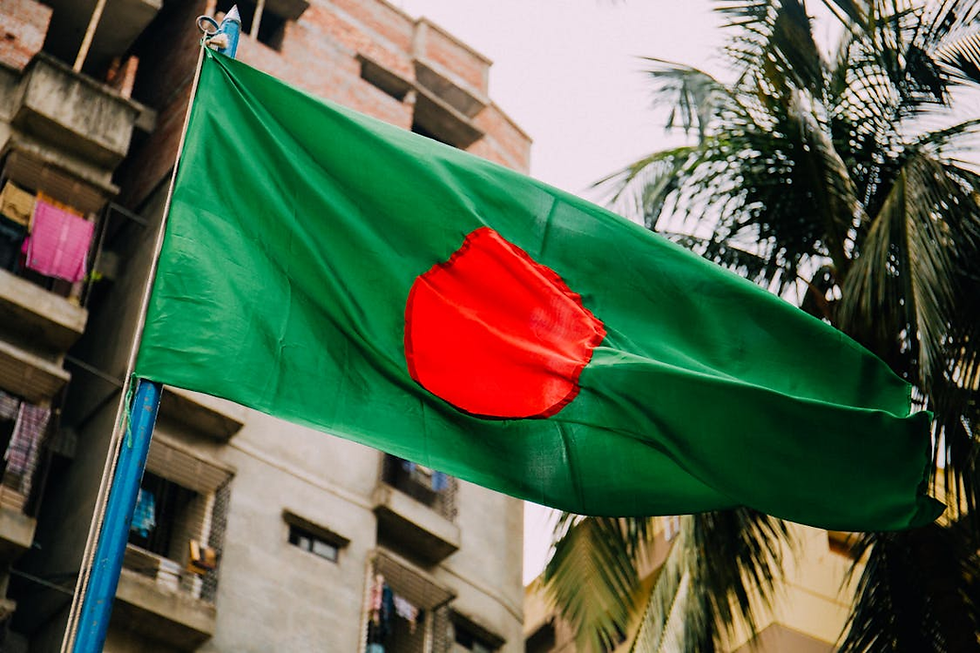Tragedy at Mount Meron, Israel
- Maeve Korengold

- May 1, 2021
- 3 min read
Updated: Dec 23, 2024
Over one-hundred and fifty people were hurt, and forty-five were killed on Thursday the 29th of April in Meron, Israel. The tragedy occurred due to a crowd crush, following severe overcrowding at a celebration of Lag B’omer: a Jewish holiday commemorating the end of a second-century plague that killed many of Rabbi Akiva’s students, celebrated with large bonfires, haircuts, weddings, singing, dancing, and prayer. In Israel, Orthodox Jews gather at Mount Meron, the site of Rabbi Shimon Bar Yochai’s tomb, to joyously observe Lag B’omer - despite continued concerns that the space cannot safely accommodate the lofty crowds that gather there each year.

At least thirty-two of the victims have been identified, and twenty-two have been released to be buried, according to the Institute of Forensic Medicine.
The tragedy, regarded as the worst peacetime catastrophe in Israel’s modern history, began at about 1 on Friday morning. One survivor of the incident recounted that the paths in the site had become slick with spilled water and grape juice, and rescue workers reported that the number of people - about one-hundred-thousand - was the determining factor in what happened. Dov Maisel, the vice president of operations of United Hatzalah, a volunteer-based first responder agency, corroborated this: "Overall they usually control the crowd, but at a certain point at the peak the crowd became too tight," he said to CNN. "It was simply tragic and horrific." The vice president of the entire organization, Lazar Hyman, asserted that the situation in Meron was the worst catastrophe that he had witnessed since beginning his career in emergency medicine.
Other survivors have likened what they saw to the aftermath of suicide-bombing attacks that Israel has faced in the past, and reported what it was like to be caught in the crowd - “A pyramid of one on top of another was formed. People were piling up one on top of the other. I was in the second row. The people in the first row - I saw people die in front of my eyes," said one injured man to Reuters.
In a statement, Prime Minister Benjamin Netanyahu described the event as one of the “heaviest disasters” that Israel has faced, and declared Sunday to be a national day of mourning for those who died. President Joe Biden reported contacting Netanyahu to offer his condolences, and Senate Majority Leader Chuck Schumer said in a press conference on Friday morning that the United States is still working to verify American victims.
Following the events of early Friday morning, many Jewish people have expressed their sympathy for those affected, and grief for those who passed away, on social media. Conversely, many have also made antisemitic posts celebrating the catastrophe. According to a report by Jewish Journal, more than ten-thousand of the thirty-thousand comments under an Al Jazeera article about the events at Mount Meron were “either laughing at or loving the fact innocent Jews have died.” One tweet reads “even the bridge wants them dead.” Another user simply tweeted “LMAOOOO.”
The volume of these expressions of delight at the death of Jews celebrating a religious holiday is alarming to some; for others, it is the reality of deep-seated antisemitism that is still widespread. Among other Jewish organizations, the Simon Wiesenthal Centre and Stand With Us expressed their disappointment at such reactions, and condemned such hate speech.
Jewish people, especially those who are Orthodox, are often the subject of humiliating, antisemitic jokes. The dress and hairstyle of Hasidic or “ultra Orthodox” Jews are often played up for the laughs of non-Jews. For example, participants in a 2020 Belgium parade dressed in exaggerated Hasidic costumes along with the abdomens of ants, fake hooked noses, and posters with caricatures of Jewish people. This normalized employment of anti-Jewish stereotypes for humor has been interpreted to dehumanize Jewish people, and delegitimize the gravity of events such as what happened at Mount Meron.
Some have also argued that the description of the crowd crush at Mount Meron as a “stampede” is another way in which the predominantly-Hasidic participants have been dehumanized. The usage of “stampede,” which usually depicts the feral charges of cattle, horses, or other animals, has been accused of reinforcing the perception of the victims as sub-human.
Shimon Lavie, the northern commander of the Israeli police, took complete liability for the situation: "Police were saving people's lives while they were also dealing with this complicated incident," he said. “I take overall responsibility, for good and for bad. I am ready for every eventuality.” Israeli and American leaders will continue to determine the identities of those who died, and mourn the lives lost.

_edited.png)



Comments